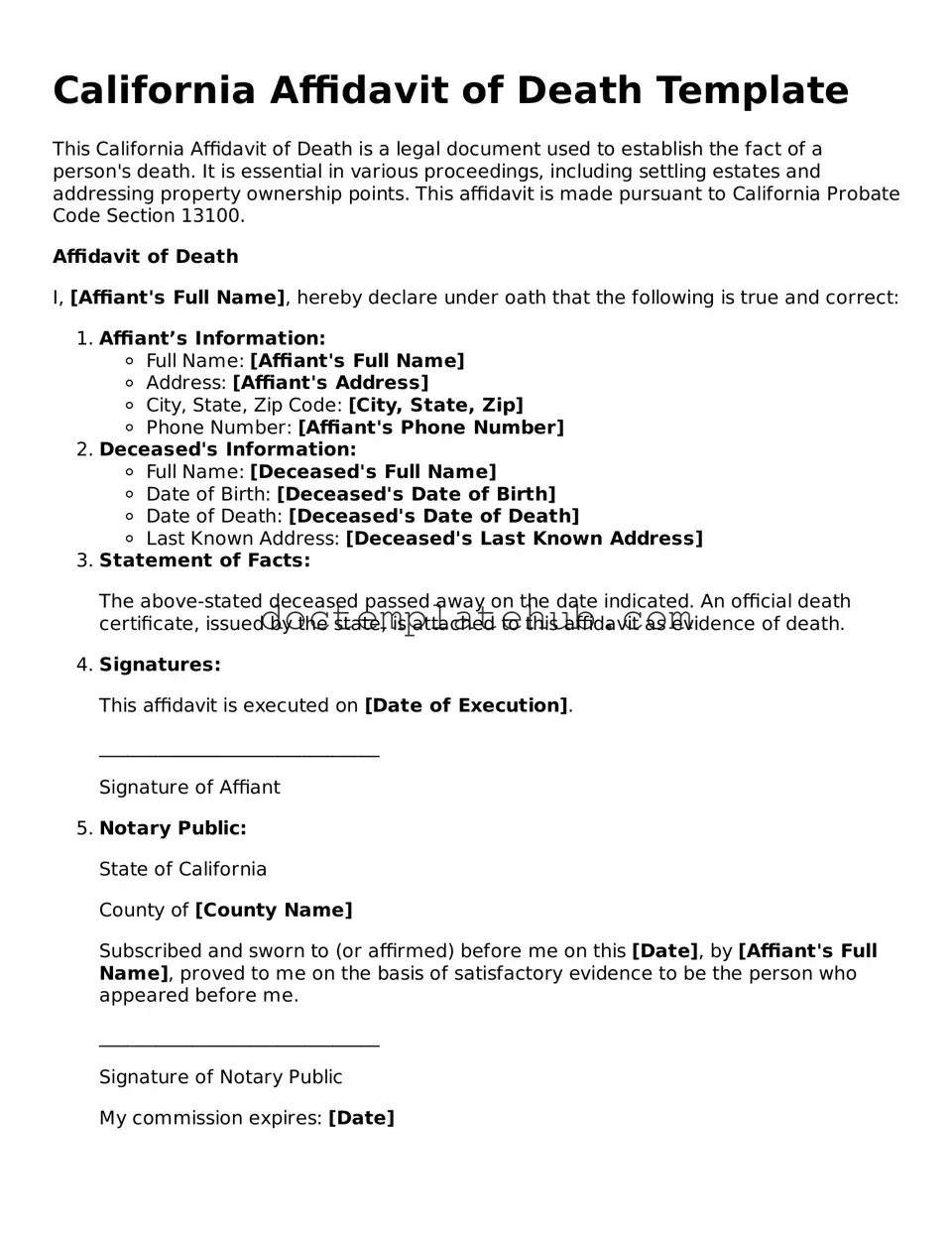Fillable Affidavit of Death Template for California State
The California Affidavit of Death form is a legal document used to officially declare the passing of an individual. This form serves as a critical tool for settling estates, transferring property, and notifying relevant parties of the death. Understanding its purpose and proper completion is essential for ensuring a smooth transition during a difficult time.
To begin the process of filling out the California Affidavit of Death form, click the button below.
Fill Out This Form
